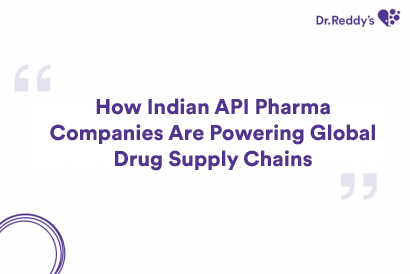Key Design Considerations for Modern API Manufacturing Facilities
The active pharmaceutical ingredient industry is undergoing a transformative shift. As global demand for high-quality medicines continues to rise, manufacturers are embracing cutting-edge technologies to enhance efficiency, reduce environmental impact, and ensure consistent quality. This article explores how automation, artificial intelligence (AI), and sustainability are reshaping the future of API manufacturing.
Regulatory Compliance and GMP Standards
One of the foremost considerations in designing active pharmaceutical ingredients facilities is adherence to Good Manufacturing Practices (GMP). Regulatory bodies such as the FDA, EMA, and CDSCO mandate strict guidelines for facility layout, equipment, and operational protocols. Key design elements include:
- Cleanroom classifications to control contamination.
- Segregated zones for different stages of production.
- Validated HVAC systems to maintain air quality and pressure differentials.
- Compliance ensures product safety and facilitates global market access.
Facility Layout and Workflow Optimization
Efficient layout design is crucial for minimizing cross-contamination and optimizing workflow. Modern API manufacturing facilities often adopt:
- Linear or modular layouts to streamline material flow.
- Dedicated areas for synthesis, purification, drying, and packaging.
- Controlled access zones to restrict personnel movement and enhance biosecurity.
- A well-planned layout reduces bottlenecks and supports lean manufacturing principles.
Integration of Automation and Digital Systems
Automation is transforming the active pharmaceutical ingredients industry by improving consistency and reducing human error. Facility design must accommodate:
- Automated reactors and filtration systems.
- Real-time monitoring and control systems.
- Digital batch records and data integrity solutions.
- Smart facilities leverage IoT and AI to enhance productivity and ensure compliance with 21 CFR Part 11 and other data regulations.
Environmental Controls and Sustainability
Sustainability is a growing priority in API manufacturing facilities. Design considerations include:
- Energy-efficient HVAC and lighting systems.
- Solvent recovery units to reduce chemical waste.
- Water recycling and effluent treatment plants.
- Green design not only reduces environmental impact but also lowers operational costs and improves community relations.
Safety and Hazard Management
API production often involves hazardous chemicals and high-pressure reactions. Safety-focused design includes:
- Explosion-proof zones and equipment.
- Emergency ventilation and fire suppression systems.
- Safe storage for flammable and toxic materials.
- Risk assessments and HAZOP studies guide the placement of safety features and emergency protocols.
Scalability and Flexibility
Modern active pharmaceutical ingredients facilities must be adaptable to changing market demands. Design strategies include:
- Modular construction for easy expansion.
- Flexible production lines that can handle multiple APIs.
- Multi-purpose reactors and cleanrooms.
- Scalability ensures long-term viability and supports contract manufacturing opportunities.
Personnel and Training Infrastructure
Human factors are integral to facility performance. Design should support:
- Comfortable and hygienic staff areas.
- Training rooms and simulation labs.
- Clear signage and workflow instructions.
- Investing in personnel infrastructure enhances compliance and operational excellence.
Expanded Examples of Automation in API Manufacturing Facilities
Automation is a cornerstone of modern API manufacturing facilities, driving efficiency, consistency, and compliance. Here are several practical examples of how automation is being implemented across different stages of production:
Automated Reactors and Process Control Systems
- Programmable Logic Controllers (PLCs) and Distributed Control Systems (DCS) manage temperature, pressure, and mixing speeds in real-time.
- Automated dosing systems precisely add reagents and solvents, reducing variability and improving yield.
Robotic Material Handling
- Automated guided vehicles (AGVs) transport raw materials and finished APIs between zones, minimizing human contact and contamination risk.
- Robotic arms handle packaging, labeling, and palletizing tasks with high speed and accuracy.
Inline Quality Monitoring
- Spectroscopic sensors (e.g., NIR, Raman) integrated into production lines provide real-time analysis of chemical composition.
- Automated sampling systems collect and test product samples without interrupting the process.
Cleanroom Automation
- Airflow and pressure monitoring systems automatically adjust HVAC settings to maintain cleanroom classifications.
- Automated cleaning systems ensure consistent sanitation of equipment and surfaces, reducing downtime.
Digital Batch Record Systems
- Electronic Batch Records (EBRs) replace manual documentation, ensuring data integrity and compliance with 21 CFR Part 11.
- Audit trail automation tracks every change and action, simplifying regulatory inspections.
Predictive Maintenance
- IoT sensors monitor equipment health and performance.
- AI-driven analytics predict failures before they occur, allowing for proactive maintenance and reducing unplanned downtime.
Inventory and Supply Chain Automation
- Automated inventory tracking systems use RFID and barcode scanning to manage stock levels.
- Integrated ERP systems synchronize procurement, production, and distribution, improving supply chain visibility.
These automation technologies not only enhance operational efficiency but also support scalability, reduce human error, and ensure compliance with global regulatory standards.
Conclusion
Designing modern API manufacturing facilities is a multidisciplinary effort that balances regulatory requirements, technological innovation, and environmental responsibility. As the active pharmaceutical ingredients industry evolves, facility design will continue to play a pivotal role in ensuring safe, efficient, and sustainable drug production.
- Call us:
 +91 40 49002253
+91 40 49002253
Contact Us
请填写以下表格,我们会尽快与您联系.





